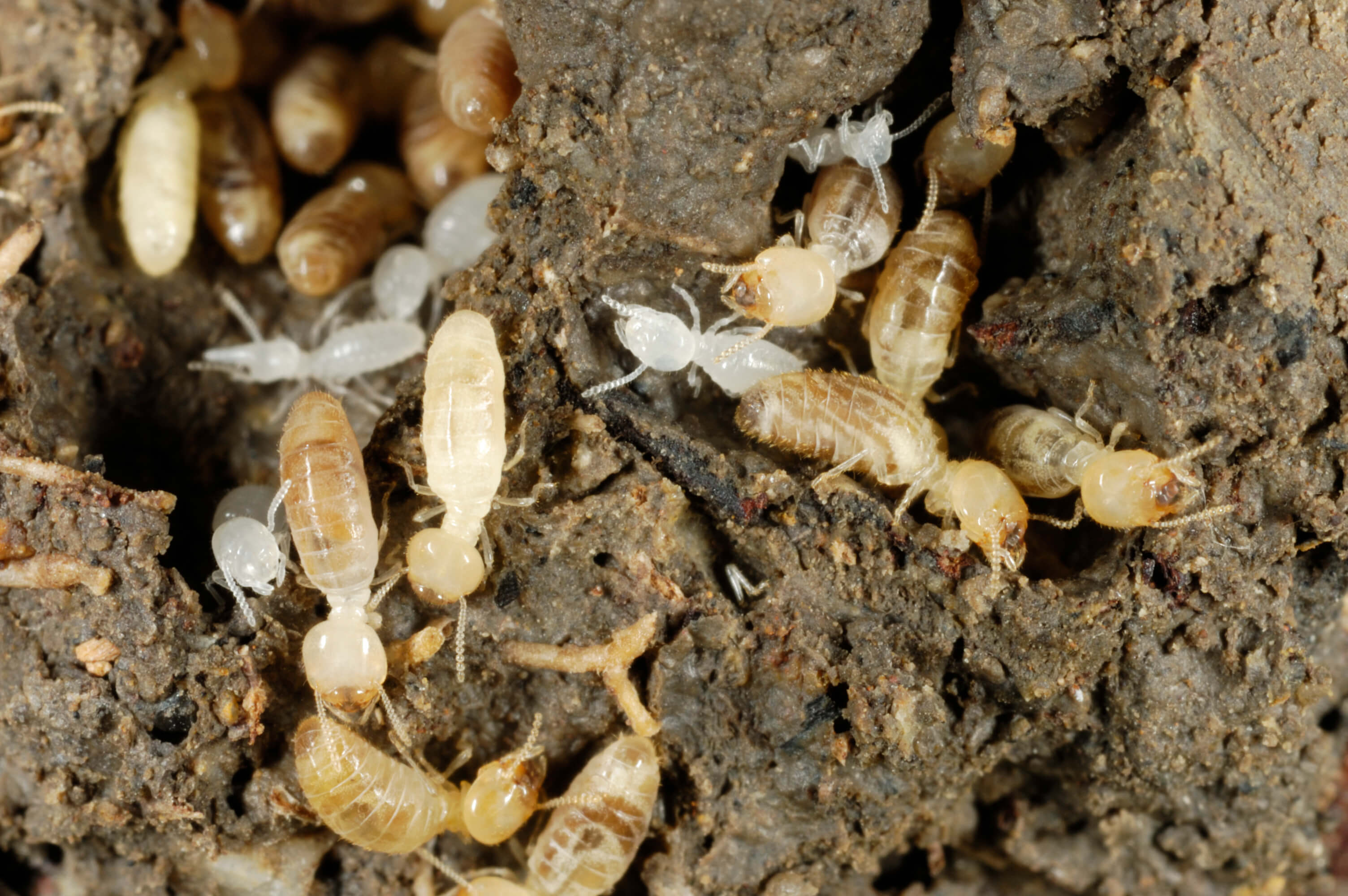Termites are a common pest in North Carolina, but what most people don’t realize is that there are multiple species that live in the area. Keep an eye out for these three types of termites around your property, especially during spring—a.k.a. swarming season.
Eastern Subterranean Termites
If your North Carolina home has a termite infestation, it’s probably Eastern subterranean termites. These pests are just one type of subterranean termite, and they are widely distributed throughout the eastern U.S.
In the south, Eastern subterranean termites will start swarming in spring, typically after rainfall. With their wings, the termite swarmers measure approximately three-eighths of an inch long. Their bodies are dark brown, and their wings are a brownish gray.
Once these termites have found a place to colonize, they’ll start building narrow tubes made of mud and saliva to travel inside to their food sources. They can enter homes through tiny cracks in the foundation and flooring. If your home has a particularly dark, damp, hidden area (like a wet area behind a wall caused by a leak), the termites might form a subsidiary nest in that location!
Formosan Subterranean Termites
Formosan subterranean termites are less common in North Carolina than their cousin (the Eastern subterranean termite), but they share some similarities. They love dark, humid places, like attics, crawl spaces, and basements, and they can be drawn to homes with leaks and drainage issues.
Following rains in spring and early summer, tens of thousands of Formosan termite swarmers can emerge from a single colony. The swarmers measure about five-sixteenths of an inch long with their wings. The wings are translucent and hairy, and their bodies range in color from a creamy, pale yellow to brownish-yellow.
These termites advance and eat so aggressively that they’ve earned the nickname “super termites.” To give you some idea, a mature colony could completely devour a 2x4 piece of wood in just 25 days. When you think about that chewing power attacking your home’s structural beams, you can see how dire an infestation can get.
West Indian Powerpost Termites
These termites occupy a relatively small pocket of the southern U.S. on the East Coast, from Virginia down to Florida. As opposed to termites that prefer soggy or rotting wood, West Indian powderpost termites are attracted to timber, furniture, and structural beams with very low moisture content.
As the weather warms up following winter, swarmers will take flight to colonize new areas. With their wings, they measure about a half-inch long or slightly smaller. The bodies range from a light yellowish-brown to a light reddish-brown, and the wings are translucent and iridescent, save for a brown vein on the outer half of each wing.
West Indian powderpost termites leave behind a telltale sign of an infestation: their droppings, which look like tiny, sandlike pellets that collect in piles below furniture and timber that they’ve hollowed out. The color of these fecal pellets varies from nearly white to dark brown, depending on what the termites were eating.
Once you see the signs of a termite infestation, it’s important that you act fast! Don’t wait to contact Sage Pest Controlfor an effective solution: (704) 413-3398.


